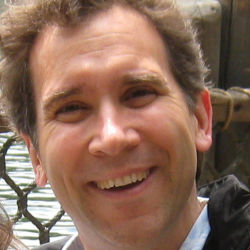
We might improve computing education by changing how we think about its ownership. The American Association of University Professors (AAUP) promotes the academic freedom of individual professors in choosing pedagogical techniques and curricular content in their classes (see for example this web page). That freedom does not prevent faculty from collaborating around teaching, and even viewing their teaching as community property.
In June, I had the opportunity to be a speaker at a research program sponsored by the University of Oldenburg. They have an innovative PhD program, Learning in Transition (see website in German) where students study new teachers in their first experiences in the classroom. I spoke about our work developing computer science teachers (e.g., our CS teacher ebook) — I’ve shared the slides here. I attended a workshop session lead by Barbara Hofer, an educational psychology researcher who specializes in issues of metacognition and cross-cultural studies. From Barbara, I learned about an influential essay by educational psychologist, Lee Shulman: Teaching as Community Property: Putting an End to Pedagogical Solitude (see link in Google Books). My research group draws on Shulman’s work on pedagogical content knowledge (see description here), the knowledge that teachers have about how to teach what they teach, but I was unfamiliar with this essay.
Shulman addresses the question of why teaching is not more valued in higher education. He believes that it’s because we isolate teaching. In research, we value being part of a community of scholars, where we discuss methods, data, and findings. Teaching is seen as an activity for individual faculty. We rarely visit one another’s classrooms. We rarely talk about methods. We argue about how we evaluate teaching (see a recent discussion about measuring teacher knowledge) which we usually frame in terms of student opinion, not expert opinion.
Shulman argues that teaching should be evaluated by the disciplines. The best judge of CS teaching is a CS teacher. If we involve students in evaluation, the evaluation forms should be discipline-specific. Chapter 8 of the great book How People Learn (see link here) is all about how effective teachers are expert in their discipline and in teaching their discipline. The effective teaching of a great history professor is not the same as that of a great mathematics or CS professor. Shulman argues that we should not evaluate all teaching in the same. Teaching as community property implies that the disciplinary community takes ownership of teaching and its evaluation.
ACM’s Special Interest Group in CS Education (SIGCSE) is a mechanism for our discipline to take ownership of CS teaching, but Shulman’s vision is broader than what we currently do in SIGCSE. SIGCSE is heavily focused on introductory computing. Shulman’s perspective suggests that all of CS teaching should be owned by the CS discipline. The IEEE/ACM Computing Curricula guidelines identify content for the whole computing curriculum (see the 2013 volume), but not teaching methods and certainly not evaluation of teaching and learning.
Barbara went beyond Shulman’s essay to describe how teaching works in Japanese schools. Japanese elementary schools take seriously the idea that teaching is not "behind closed doors," but is instead a shared responsibility and community property. Japanese teachers have two desks — one in the front of the classroom, and one in the staff room where the communal work of teaching takes place. The staff room is an active place where teachers share teaching methods, make plans, and work on shared goals. Teaching is valued and discussed.
Barbara got me thinking about how we could use this perspective in a computing program. Because our classes often have deep pre-requisite chains, we do have a shared responsibility for our students’ education — our teaching is naturally interconnected. Viewing our teaching as collective property creates the opportunity to ask how the teaching in a pre-requisite class might influence the teaching in a later class — and vice versa. One could imagine the Networking teacher to ask the Data Structures teacher to cover particular algorithms to improve student learning. One could also imagine the Data Structure teacher recommending particular methods (e.g., perhaps peer instruction which has been highly successful in many CS classes) that worked well in the earlier class and might enhance learning in the later class.
Physics education is probably closest to Shulman’s view. Physics educators do publish on their pedagogy (e.g., the American Journal of Physics). A 2010 study found that over 80% of physics faculty who responded to a survey (over 700 faculty) were familiar with research-based teaching practices (see publication here).
Computer science could adopt a perspective of teaching as community property. We could work together to improve learning within computing programs and to improve our teaching. We might make progress on addressing some of our education challenges using this change in perspective. For example, viewing teaching as community property makes it easier to share and develop pedagogical content knowledge, which can improve our ability to support diversity in our classes (see article here). As Turing Awardee Alan Kay put it, "A change in perspective is worth 80 IQ points."



Join the Discussion (0)
Become a Member or Sign In to Post a Comment